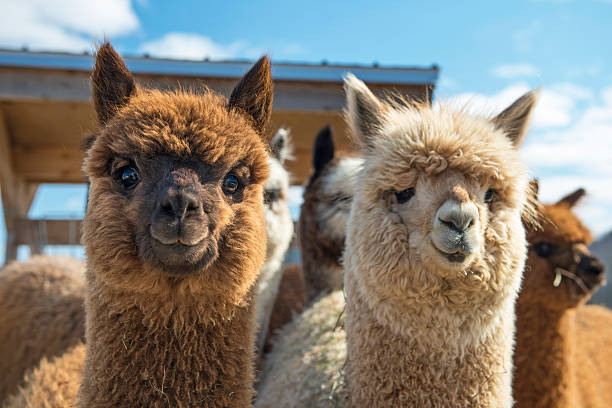Paw-sitive Vibes: The Surprising World of Therapy Llamas
In a world where emotional support animals are becoming increasingly prevalent, a new trend is emerging that's turning heads and melting hearts: therapy llamas. These gentle giants are stepping out of the South American highlands and into hospitals, nursing homes, and schools across the United States, bringing comfort and joy to those in need.

The Rise of Llama Therapy
Llama therapy is a relatively new concept, gaining traction over the past decade. Unlike their cousin the alpaca, llamas have a larger stature and more outgoing personality, making them ideal candidates for therapy work. These animals are known for their gentle nature, intelligence, and ability to form strong bonds with humans.
The use of llamas in therapy settings began in the early 2000s when a handful of llama owners noticed the positive impact their animals had on people during casual interactions. Since then, the practice has grown, with organizations like the Llama Therapy Association advocating for the benefits of llama-assisted interventions.
The Unique Benefits of Llama Therapy
Llamas offer several advantages over traditional therapy animals like dogs or cats. Their size and appearance make them novelty animals, instantly capturing attention and sparking curiosity. This natural ability to engage people can be particularly beneficial for individuals with depression or social anxiety.
Moreover, llamas are hypoallergenic, making them suitable for individuals with allergies to other animals. Their calm demeanor and ability to stand still for extended periods make them ideal for physical therapy sessions, where patients can practice balance and coordination by walking alongside or grooming the llama.
Training and Certification
Not every llama is cut out for therapy work. The process of becoming a certified therapy llama is rigorous and involves extensive training and temperament testing. Llamas must demonstrate a calm disposition, tolerance for new environments, and the ability to interact gently with people of all ages and abilities.
Organizations like the Therapy Llama Certification Program (TLCP) have developed standardized protocols for assessing and certifying therapy llamas. The certification process typically includes health screenings, obedience training, and simulated therapy scenarios to ensure the llama can handle various situations they might encounter during visits.
Llamas in Action: Success Stories
Across the country, therapy llamas are making a significant impact on the lives of those they visit. In pediatric hospitals, these gentle giants bring smiles to the faces of children undergoing treatment, providing a welcome distraction from pain and anxiety. Elderly residents in nursing homes find comfort in the soft touch of a llama’s coat and the animal’s patient presence.
One notable success story comes from a rehabilitation center in Oregon, where a therapy llama named Rojo has been visiting patients for over a decade. Rojo’s presence has been credited with motivating patients to participate more actively in their physical therapy sessions, leading to improved outcomes and faster recovery times.
The Future of Llama Therapy
As awareness of the benefits of llama therapy grows, so does the demand for these unique therapy animals. Research into the effectiveness of llama-assisted interventions is ongoing, with preliminary studies suggesting positive outcomes in areas such as stress reduction, mood improvement, and increased social interaction among participants.
The estimated cost of incorporating llama therapy into healthcare and educational settings varies, with some organizations charging around $200-$300 per visit. While this may seem steep, many facilities report that the benefits far outweigh the costs, particularly in terms of patient satisfaction and well-being.
Challenges and Considerations
Despite the many benefits of llama therapy, there are challenges to consider. Llamas require specialized care and handling, which can be more complex than that of traditional therapy animals. Additionally, transportation and space requirements can limit the accessibility of llama therapy in some settings.
There are also ongoing discussions about the ethics of using exotic animals in therapy roles and the need for strict regulations to ensure the well-being of both the llamas and the people they interact with. As the field of llama therapy continues to evolve, addressing these concerns will be crucial to its long-term success and acceptance.
A Woolly Revolution in Therapy
Therapy llamas represent an exciting frontier in animal-assisted interventions, offering a unique combination of novelty, gentleness, and therapeutic benefits. As research continues to support their effectiveness, and more success stories emerge, it’s likely that we’ll see these charismatic camelids playing an increasingly important role in healthcare, education, and community outreach programs.
The world of therapy animals is evolving, and llamas are leading the charge, one soft step at a time. Whether it’s bringing joy to a child in the hospital, motivation to a patient in physical therapy, or companionship to an elderly resident, therapy llamas are proving that sometimes the best medicine comes with four legs, a woolly coat, and a gentle hum.





